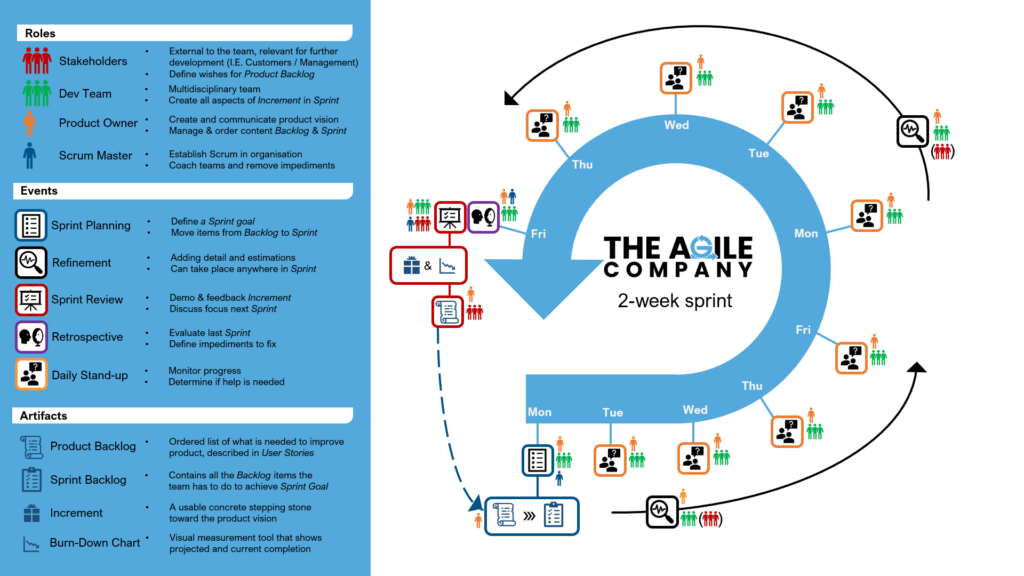Should you not yet know what it is, chances are that you have already heard the term a couple of times. But what does it mean if someone indicates that they work ‘Scrum’ in their company, what is it?
Scrum Definition
Scrum is a lightweight framework, which translates into a methodology with certain rules, roles and recurring sessions. You work with small (multidisciplinary) teams that deliver pieces of ‘working product’ in small steps (mini-projects called ‘sprints’) and discuss these with customers and/or users. This allows you to quickly adjust and adapt to a changing environment, with changing requirements and wishes.
Scrum in a nutshell
The methodology knows 3 different roles, 5 recurring sessions within the mini-projects that we call sprints and 3 ‘tangible’ parts that are called ‘Artifacts’.
Roles
Scrum knows the following roles:
- Product Owner – Responsible for the product and managing the to-do list of what is needed to improve the product (known as the ‘Product Backlog’)
- Development Team – responsible for the work in a sprint and the execution of it
- Scrum Master – responsible for the process and the effectiveness of the team
Sessions
Scrum knows the following recurring sessions in a sprint:
- Sprint Planning – determine the purpose of a sprint and the work that needs to be done.
- Sprint Review – present and discusses the completed work and discuss the focus of the next sprint
- Sprint Retrospective – look back at the last sprint to see how quality and effectiveness can be improved
- Daily Stand-up (also known as Daily Scrum) – discuss progress and whether someone needs help
- Refinement – update and refine the Product Backlog
Artifacts
Scrum knows the following artifacts:
- Product Backlog – an ordered list what is needed to improve the product, written from the perspective of the user or stakeholder.
- Sprint Backlog – an ordered list of work (selected from the Product Backlog) that the team must do within a sprint to reach the sprint goal.
- Increment – a working (part of the) product, the result of work done in the sprint.
Even though it is not covered in the Scrum Guide, often the Burn-down chart is also named as artifact. It can be used as a measuring instrument to gain insight into the productivity of a team.
Below an example of a two week sprint:
If you want to know more about Agile Scrum you can also follow our online course. Here you will learn how Agile Scrum is applied in practice. It contains all fundamental information about this method; from the different roles and sessions, to actually starting with Agile Scrum in your own business environment. In 10 lessons, lasting approximately 3 hours, the basics are explained through videos, text, quizzes, practical examples and visual aids.
Was this article helpful?

